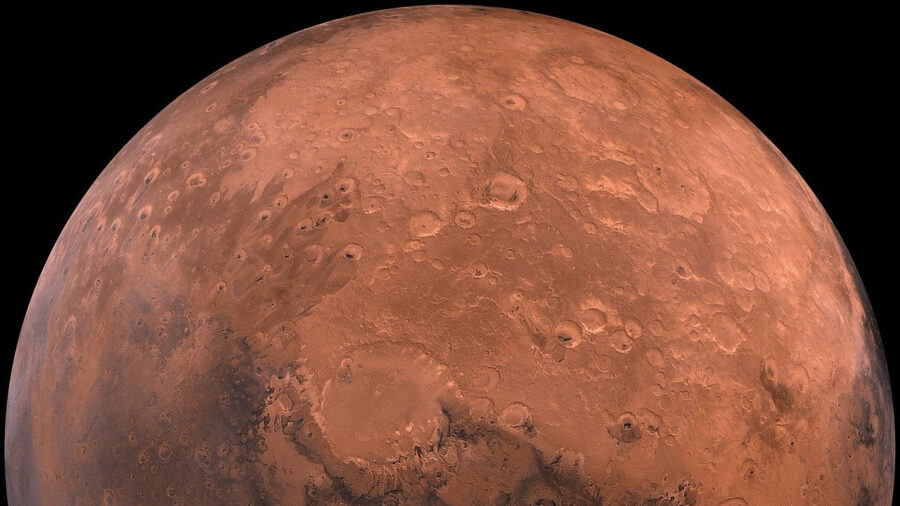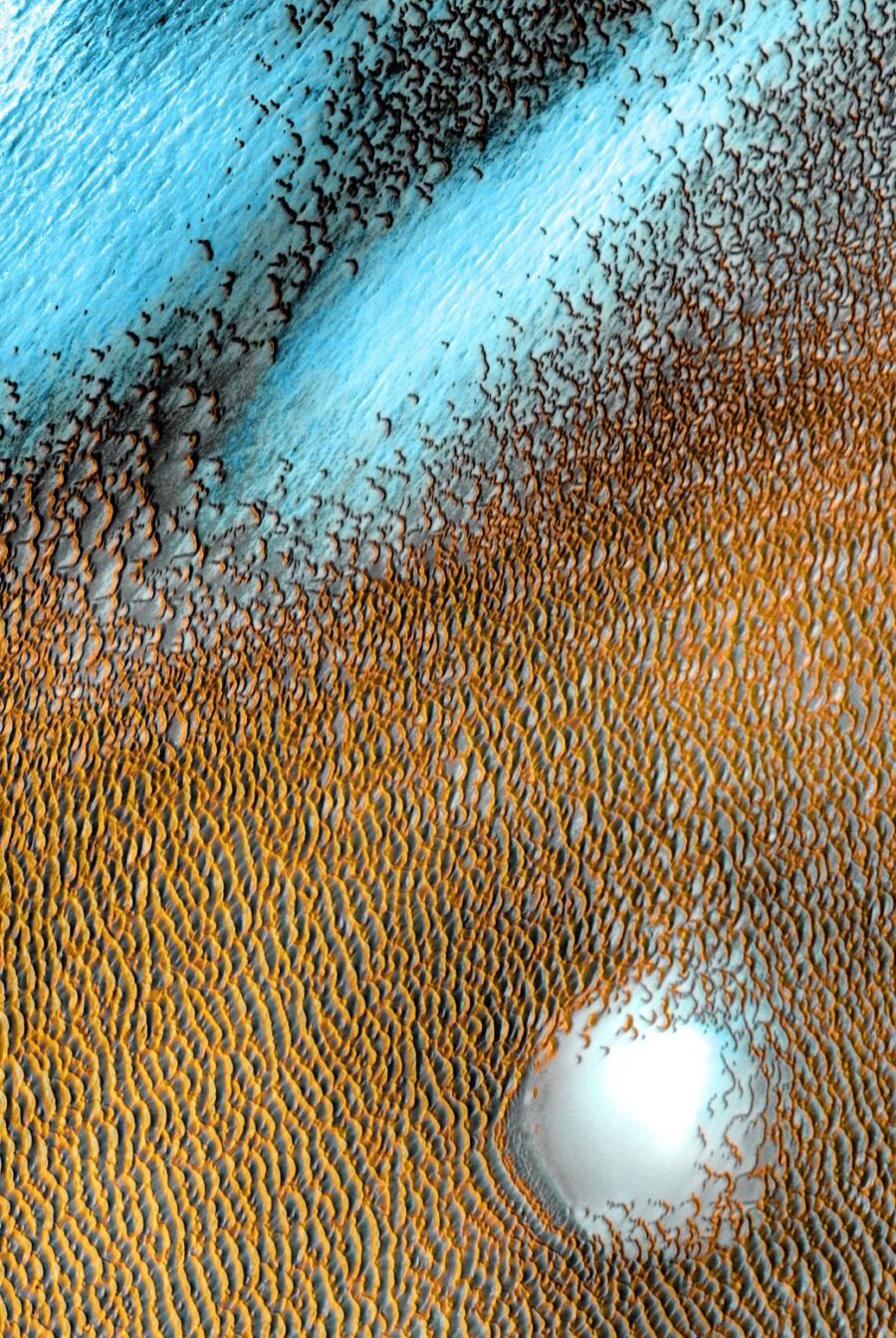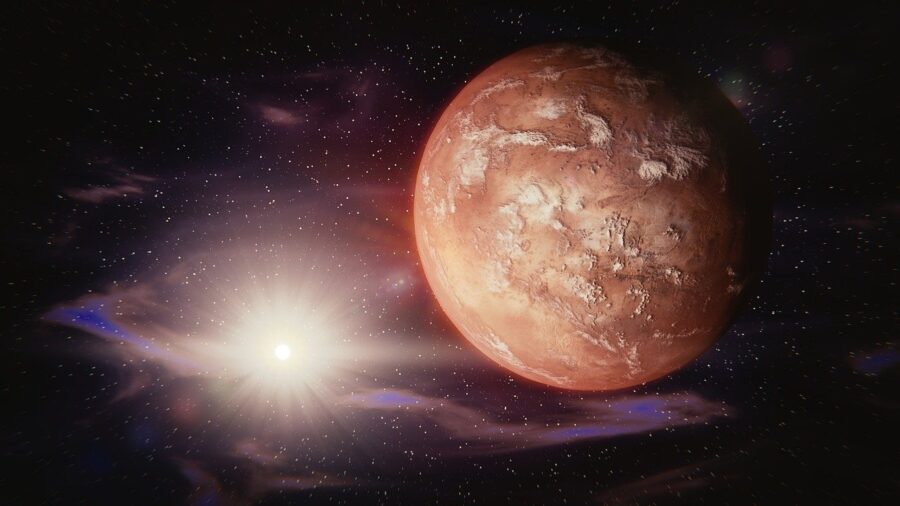See Blue Sand Dunes On Mars, Captured By NASA In New Image
See a stunning new image from the surface of Mars.
This article is more than 2 years old

The Mars Odyssey is the longest-working Mars spacecraft ever sent to that fourth rock from the sun. As of April 7, 2021, the craft has provided researchers with two decades’ worth of revelations about our mysterious neighbor. We have learned so much from the sturdy orbiter, but for every answer it illuminates, two new questions pop up. And now, NASA has released some breathtaking new photos of blue sand dunes, deepening the mystery of this close-but-far planet. Here is one of them:

Pretty staggering, isn’t it? At first, it is somewhat difficult to tell what exactly you are looking at, but on closer inspection it is clear that this photo is not at all of this Earth.
The image is part of a special set celebrating the Mars Odyssey’s 20th anniversary. It blends together images the Odyssey originally sent to NASA between December 2002 and November 2004. Launched from Cape Canaveral Air Force Station in Florida in April 2001, the Odyssey was named after science fiction author Arthur C. Clarke‘s seminal work 2001: A Space Odyssey and was designed for surface composition mapping. Basically, the objective was to figure out how the planet evolved, and it was to do it by studying Mars’s surface. From what scientists have been able to put together, Mars was once a much wetter planet. Many of the conclusions they have reached would not have been possible without the Odyssey’s data.
Among the Mars Odyssey’s many accomplishments is its mapping of Martian ice, its extensive use of infrared cameras-formally called Thermal Emission Imaging System, and its ability to spot areas where other spacecraft can land safely. All of these things have allowed scientists to obtain the data they need to continue their research.

There is still so much we do not know about Mars, but with help from the Odyssey orbiter and other Mars-bound rovers and orbiters, we are well on our way to learning more about this planet, what it was once like, what it’s like now, etc. The scientists studying this planet definitely have their work cut out for them, and the Odyssey, the Perseverance (see below) and various other spacecraft have helped make researching Mars much easier.
On February 18, 2021, nearly decades after NASA first sent the Odyssey off to Mars, the Perseverance rover touched down. Thanks to the Perseverance, the world even got to listen to sounds from Mars for the first time ever.
If any of this interests you, be sure to explore NASA’s website. There is a ton to see and read there, and most of it is information you will definitely want if you are hoping for our eventual colonization of Mars. Don’t cross your fingers for that happening in our lifetimes, but hey, it is definitely something wishful thinkers are actively discussing.
Regarding the Mars Odyssey: it is no wonder the aforementioned science fiction author Arthur C. Clark gave the spacecraft his blessing. He must have had a solid idea of just how important and groundbreaking this particular orbiter was and still is.












